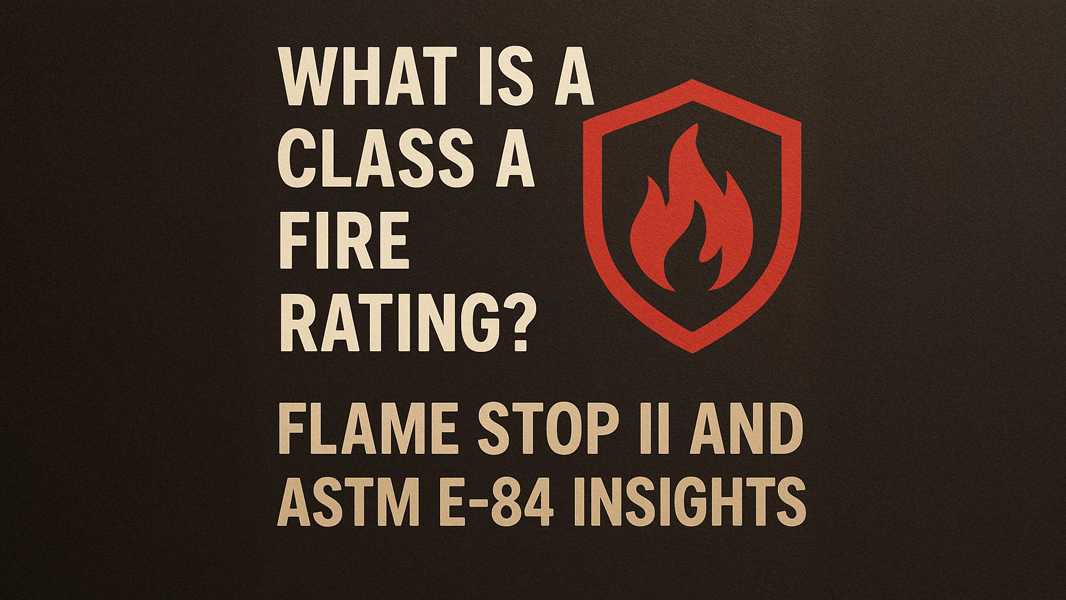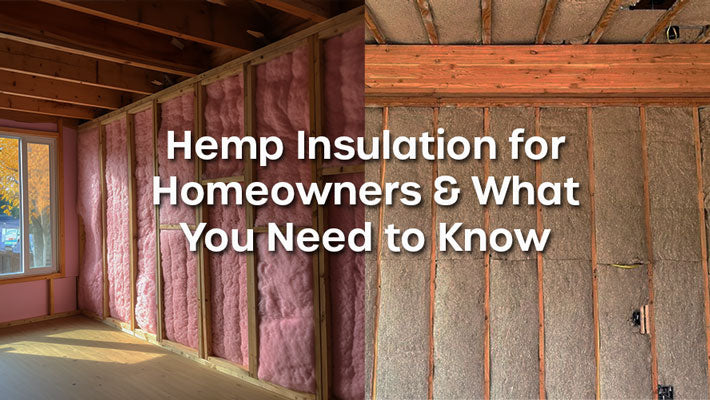What Is a Class A Fire Rating?
Flame Stop II and ASTM E-84 Insights
Understanding Fire Retardants:
ASTM E-84 vs. ASTM E119 and Flame Stop II
Fire safety is a critical consideration for homeowners, builders, and property managers. When choosing fire-retardant products, you may encounter terms like “Class A fire rating” or “1-hour fire resistance” and standards like ASTM E-84 and ASTM E119. These refer to different tests and performance metrics for fire protection. In this blog, we’ll clarify these standards, using Flame Stop II—a topical fire retardant—as an example, to help you make informed decisions about fire safety.
Flame Stop II is a topical fire-retardant coating that, when applied to wood, earns a Class A rating under ASTM E-84, significantly slowing flame spread and reducing smoke production. It protects wood surfaces by delaying ignition and limiting fire growth, offering critical time for evacuation or firefighting, though it doesn’t provide structural fire resistance. Ideal for enhancing safety in homes or buildings, it’s a cost-effective solution for surface-level fire protection. explain Class A rating other fire-retardant products
Continue on to learn more about the differences in fire retardants and the use of Flame Stop ii.
What Does It Mean for a Topical Liquid Fire Retardant to Have a
"Class A" Fire RatingUnder ASTM E-84?
The ASTM E-84 test, also known as the Steiner Tunnel Test, evaluates how a material’s surface behaves when exposed to a flame for 10 minutes. It measures two key factors: the Flame Spread Index (FSI) (how fast flames spread across the surface) and the Smoke Developed Index (SDI) (how much smoke is produced). Materials are classified as Class A, B, or C based on their performance:
- Class A: FSI of 0–25 and SDI of 0–450. This is the highest rating, indicating minimal flame spread and low smoke production.
A topical fire retardant like Flame Stop II, when applied to materials such as wood, achieves a Class A rating under ASTM E-84. This means it significantly slows flame spread and reduces smoke compared to untreated materials. For example, treated wood might resist burning across its surface, helping to contain a fire’s early spread. However, this rating only applies to surface burning characteristics, not structural fire resistance over time.
How Long Will My Topical Fire Retardant Like Flame Stop II Provide Before the Entire Structure Is Consumed?
Products like Flame Stop II, tested under ASTM E-84, do not have a time-based fire resistance rating. The ASTM E-84 test focuses on surface flame spread and smoke for 10 minutes, not on how long a treated material or structure can withstand a fire before failing. Once the fire penetrates beyond the treated surface or the retardant’s effect is overwhelmed (e.g., by intense heat or prolonged exposure), the underlying material can burn, and the structure may eventually be consumed.
The actual time before a structure is fully engulfed depends on factors like the fire’s intensity, the materials used, and the structure’s design—not just the fire retardant. For instance, Flame Stop II can delay ignition and slow fire spread on treated surfaces, potentially giving occupants more time to evacuate or firefighters more time to respond. However, it cannot guarantee a specific duration of protection like a time-based rating (e.g., 1-hour) provided by other tests.
What is the Application Coverage Rate For Flame Stop ii Over Wood?
The coverage rate for Flame Stop II over wood is 125 square feet per gallon for a single application. This applies to porous, unsealed wood surfaces like Douglas fir, cedar shake shingles, decking, and structural lumber, ensuring a Class A fire rating (Flame Spread 25, Smoke Developed 25) when applied correctly. For larger quantities, a 5-gallon pail covers 625 square feet, and a 55-gallon drum covers 6,875 square feet.
Measure your surface area carefully before ordering to ensure you purchase enough product, as Flame Stop products are non-returnable unless defective.
Interior vs. Exterior: For interior use, the flame-retardant properties are indefinite. For exterior applications, reapply every five years due to weathering.

What’s the Difference Between ASTM E-84 Class A Fire Rating and Other Products That Are Tested Under the ASTM E119 Rating System?
The ASTM E-84 and ASTM E119 tests serve distinct purposes in fire safety:
- ASTM E-84 (Surface Burning Characteristics): This test assesses how a material’s surface reacts to fire. Products like Flame Stop II, applied to surfaces like wood or textiles, reduce flame spread and smoke production. A Class A rating indicates excellent surface-level fire resistance but doesn’t measure how long the material or structure can endure fire exposure or maintain structural integrity.
- ASTM E119 (Fire Resistance): This test evaluates entire assemblies (e.g., walls, floors, or roofs) for their ability to contain a fire, resist heat transfer, and maintain structural integrity under prolonged fire exposure. It assigns hourly ratings (e.g., 1-hour, 2-hour) based on how long the assembly can withstand a standard fire before failing. ASTM E119 is about systemic fire protection, not just surface performance.
If you apply Flame Stop II, it helps prevent flames from spreading quickly across surfaces, ideal for early fire suppression. However, for a structure to resist fire for a specific time (e.g., 60 minutes), you need an ASTM E119-rated assembly, like a fire-rated gypsum drywall wall, which is designed to hold back fire and protect the structure longer.
Can I Use Flame Stop II or Other Fire Retardants to Protect a Structure From a Forest Fire or Wildfire?
Flame Stop II and similar topical fire retardants are not effective against wildfires. Their Class A rating under ASTM E-84 means they can slow flame spread on treated surfaces, potentially reducing the risk of ignition from embers or brief flame contact. For example, applying Flame Stop II to exterior wood siding or decking might delay ignition from a stray ember, but would not stop a wall of fire from consuming a wood structure.
Wildfires involve intense heat, prolonged exposure, and multiple ignition sources, which can overwhelm topical retardants. Flame Stop II cannot provide the structural fire resistance needed to protect a building from being consumed in a severe wildfire. For wildfire protection, you should combine retardants with fire-resistant construction (e.g., ASTM E119-rated assemblies, non-combustible roofing), defensible space (clearing vegetation), and ember-resistant design (e.g., screened vents). Always follow local fire codes and consult professionals for comprehensive wildfire preparedness.
What Products Are Typically Evaluated Under ASTM E119 (Time Based Rating System)?
ASTM E119 tests are applied to building assemblies, not individual materials or topical treatments like Flame Stop II. Common products and systems evaluated under ASTM E119 include:
- Wall assemblies: Fire-rated drywall (e.g., Type X or Type C gypsum board) combined with studs, insulation, and other components, often rated for 1-hour or 2-hour fire resistance.
- Floor and ceiling systems: Concrete slabs, wood joists with fire-rated coverings, or steel decking designed to prevent fire spread.
- Roof assemblies: Fire-resistant roofing materials and underlayments tested as part of a complete system.
- Doors and windows: Fire-rated doors (e.g., 20-minute or 90-minute ratings) and glazing systems designed to block fire and heat.
- Structural elements: Beams, columns, or trusses treated or protected to maintain integrity during fire exposure.
These assemblies are critical in commercial and residential buildings to meet fire safety codes, ensuring compartments can contain fires and allow safe evacuation or firefighting.
Conclusion: Choosing the Right Fire Protection
Understanding the difference between ASTM E-84 and ASTM E119 is key to selecting the right fire protection for your needs. Products like Flame Stop II, with a Class A rating under ASTM E-84, are excellent for reducing surface flame spread and smoke, making them ideal for treating materials like wood or fabrics. However, they don’t provide the time-based, structural fire resistance offered by ASTM E119-rated assemblies, such as fire-rated walls or floors, which are designed to withstand fire for specific durations.
For maximum safety, consider combining topical fire retardants with fire-resistant construction, especially in high-risk areas like wildfire-prone regions. Always consult with fire safety professionals and adhere to local building codes to ensure your property is well-protected.




